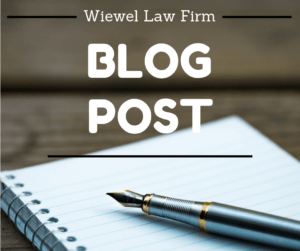
Tips to Reduce Size of your Taxable Estate
The current lifetime estate and gift tax exemption is set to be cut by half after 2025, unless Congress acts to extend it, which doesn’t seem likely in the current financial environment. There are tips to help reduce the size of your taxable estate, reported in a recent article “Smarter Ways To Make Estate Planning Gifts” from Forbes.
It’s generally better to give property than to give cash, especially investment property. Recipients are less likely to sell these gifts and spend the proceeds. It’s more likely that cash will be spent rather than invested for the long term. Investment property is almost always a better gift for the long term.
However, property gifts come with potential taxes. To help reduce the size of your taxable estate, make gifts of the correct properties. There are a few principals to follow.
Don’t give investment property with paper losses. The recipient of a gift of property gets the same tax basis in the property as the person making the gift. The appreciation occurring during the holding period is taxed when the gift recipient sells the property.
If the property didn’t appreciate when the owner had it, the beneficiary’s tax basis will be the lower of the owner’s basis and the current market value. When the investment lost value, the beneficiary reduces the basis to the current fair market value. The loss incurred for the owner won’t be deductible by anyone. There is no winner here. It is best for the owner to hold the loss property or sell it, so at least they can deduct the loss and gift the after-tax proceeds.
Give appreciated investment property after a price decline. This makes maximum use of the annual gift tax exclusion and minimizes the use of the giver’s lifetime estate and gift tax exemption. You can give more shares of a stock or mutual fund by making the gift when prices are lower.
Let’s say shares of a mutual fund were at $60—you could give 266.67 shares tax free under the annual gift tax exclusion ($17,000 in 2023). If the price dropped to $50, you could give 320 shares without exceeding the exclusion limit.
When the recipient holds the shares and the price recovers, they will have received more long-term wealth. The giver would not have incurred estate and gift taxes or used part of their lifetime exemption.
This is also an example of why families should consider gift giving throughout the year and not just at year’s end. An even better way: determine early in the year how much you intend to give, and then look for a good time during the year to maximize the tax-free value of the gift.
It’s good to give property most likely to appreciate in value. If the goal is to remove future appreciation from the estate, gift property you expect to appreciate. This also serves to maximize the wealth of loved ones, especially appreciated when the beneficiary is in a lower tax bracket. When the property is eventually sold, the beneficiary likely will pay capital gains taxes on the appreciation at a lower rate than the giver would. You pass on more after-tax wealth and reduce the family’s overall taxes.
Retain property if it has appreciated significantly. When it’s time to sell the property and the loved one is in the 0% capital gains tax bracket, it’s best to make a gift of the property and let them sell it. Even if the loved one is in the 10% capital gains tax bracket, this still make sense if you’re in the higher capital gains tax bracket. But there are some things to consider. If the gain pushes the recipient into a higher tax bracket and triggers higher taxes on all their income, it won’t be a welcome gift. If there’s no urgent need to sell the property, you can ensure a 0% capital gain by simply holding onto the investment.
Give income-generating assets. If you hold income-generating investments and you don’t need the income, consider giving those to family members in a lower tax bracket. This reduces taxes on the income and the recipient is also less likely to sell the asset to raise cash when it’s generating income.
Remember the Kiddie Tax. Heirs who are age 19 or under (or under 24 if they are full-time college students) are hit with their parents’ highest tax rate on investment income they earn above a certain amount, which was $2,300 in 2022. At this point, gifts of income-producing property create tax liabilities, not benefits.
These are just a few tips to help you reduce to size of your taxable estate. Work with your estate planning attorney to identify any additional tax reductions available. If you would like to learn more about tax planning, please visit our previous posts.
Reference: Forbes (Dec. 27, 2022) “Smarter Ways To Make Estate Planning Gifts”

















